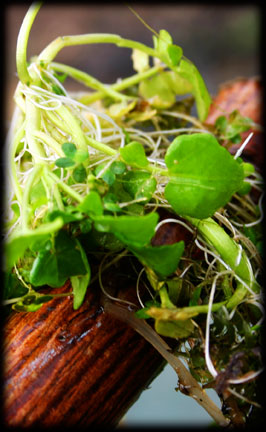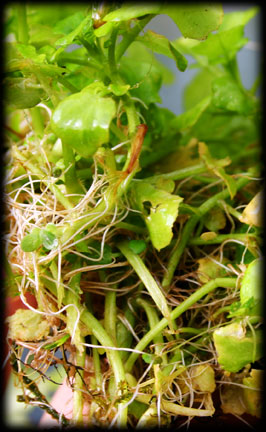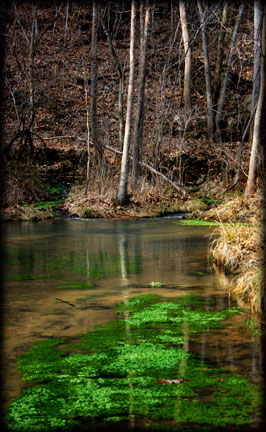Watercress
by Joshua Heston
Watercress isn’t quite as hard to find as you might think.
In fact, most anywhere you can find spring water, chances are beds of North American watercress will be floating nearby.
Sadly, cress is not always safe to eat.
No matter how pure that springwater looks, Karst topography — the vast beds of eroded limestone that pump water in and out, creating lost rivers and massive springs — absorbs pollutants mighty fast.
Spilled oil, farm pesticides, even sewage bacteria can make its way into the Ozarks water system.
And those pollutants can make their way onto the watercress pretty easily.
However, if the water is clean and the watercress properly washed, well, it’s one of the oldest, most readily available salads in these hills.
Early settlers learned it was good stuff — and good for you — even when they didn’t know the plant’s leaves are rich in vitamin C.
Cress grows well in that cold spring water, making it readily available year ’round. It could be eaten plain like lettuce, cooked like spinach or collards, or folded into a simple sandwich.
It was good eatin’, guaranteed to have kept more than one hillbilly family from succumbing to scurvy back in the day.
So, if you know of a clean patch of watercress around, would you let me know?
I’m hungry.
Watercress (Nasturtium officinale)
Size: to 10 feet long; flower 1/4 inch wide. What to look for: stems matted in water, creeping on bank; leaves shiny, divided into many leaflets; flowers white, in clusters. Habitat: cold water, banks of springs and streams. In bloom: March to November.
— page 376, Wernett, Susan J., et al. North American Wildlife. The Reader's Digest Association, Inc., 1986.

Plate 1.

Plate 2.

Plate 3.



